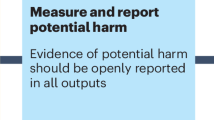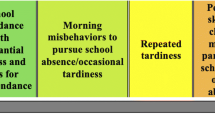Abstract
We conducted a 2-year pilot randomized controlled trial (N = 105) in a high HIV-prevalence area in rural western Kenya to test whether providing young orphan adolescents with uniforms, school fees, and community visitors improves school retention and reduces HIV risk factors. The trial was a community intervention, limited to one community. In this paper, we examined intervention implementation and its association with outcomes using longitudinal data. We used both quantitative and qualitative methods to evaluate the community-based model for orphan HIV prevention, with recommendations for future studies. Despite promising effects after 1 year, GEE analyses showed null effects after 2 years. Volunteer community visitors, a key element of the intervention, showed little of the expected effect although qualitative reports documented active assistance to prevent orphans’ school absence. For future research, we recommend capturing the transition to high school, a larger sample size, and biomarker data to add strength to the research design. We also recommend a school-based intervention approach to improve implementation and reduce infrastructure costs. Finally, we recommend evaluating nurses as agents for improving school attendance and preventing dropout because of their unique ability to address critical biopsychosocial problems.
Similar content being viewed by others
References
UNAIDS. (2010). Global report: UNAIDS report on the global AIDS epidemic 2010. Geneva, Switzerland: Joint United Nations Programme on HIV/AIDS (UNAIDS). Available at: http://www.unaids.org/en/media/unaids/contentassets/documents/unaidspublication/2010/20101123_globalreport_en.pdf.
UNICEF. (2003). Africa’s orphaned generations. New York: United Nations Children’s Fund. Available at: http://www.unicef.org/sowc06/pdfs/africas_orphans.pdf.
Case, A., Paxson, C., & Ableidinger, J. (2004). Orphans in Africa: Parental death, poverty, and school enrollment. Demography, 41(3), 483–508.
Monasch, R., & Boerma, J. T. (2004). Orphanhood and childcare patterns in sub-Saharan Africa: An analysis of national surveys from 40 countries. AIDS, 18(Suppl 2), S55–S65.
Evans, D. K., & Miguel, E. (2007). Orphans and schooling in Africa: A longitudinal analysis. Demography, 44(1), 35–57.
Lester, P., Rotheram-Borus, M. J., Lee, S. J., et al. (2006). Rates and predictors of anxiety and depressive disorders in adolescents of parents with HIV. Vulnerable Children and Youth Studies, 1(1), 81–101.
Palermo, T., & Peterman, A. (2009). Are female orphans at risk for early marriage, early sexual debut, and teen pregnancy? Evidence from sub-Saharan Africa. Studies in Family Planning, 40(2), 101–112.
UNICEF. (2006). Africa’s orphaned and vulnerable generations children affected by AIDS. New York: United Nations Children’s Fund. Available online at: http://www.unicef.org/publications/files/Africas_Orphaned_and_Vulnerable_Generations_Children_Affected_by_AIDS.pdf.
Loening-Voysey, H., & Wilson, T. (2001). Approaches to caring for children orphaned by AIDS and other vulnerable children: Essential elements of quality service. Bergvlei: Institute for Urban Primary Health Care.
Blankenship, K. M., Friedman, S. R., Dworkin, S., & Mantell, J. E. (2006). Structural interventions: Concepts, challenges and opportunities for research. Journal of Urban Health, 83(1), 59–72.
Gupta, R., Warren, T., & Wald, A. (2008). Genital herpes. The Lancet, 370(9605), 2127–2137.
Catalano, R. F., & Hawkins, J. D. (1996). The social development model: A theory of antisocial behavior. In J. D. Hawkins (Ed.), Delinquency and crime: Current theories. New York: Cambridge University Press.
Jukes, M., Simmons, S., & Bundy, D. (2008). Education and vulnerability: The role of schools in protecting young women and girls from HIV in southern Africa. AIDS, 22(Suppl 4), S41–S56.
Cowan, F. M., Pascoe, S. J., Langhaug, L. F., et al. (2008). The Regai Dzive Shiri Project: A cluster randomised controlled trial to determine the effectiveness of a multi-component community-based HIV prevention intervention for rural youth in Zimbabwe—study design and baseline results. Tropical Medicine and International Health, 13(10), 1235–1244.
Pascoe, S. J., Langhaug, L. F., Durawo, J., et al. (2010). Increased risk of HIV-infection among school-attending orphans in rural Zimbabwe. AIDS Care, 22(2), 206–220.
Thurman, T. R., Brown, L., Richter, L., Maharaj, P., & Magnani, R. (2006). Sexual risk behavior among South African adolescents: Is orphan status a factor? AIDS and Behavior, 10(6), 627–635.
Duflo, E., Dupas, P., Kremer, M., & Sinei, S. (2006). Education and HIV/AIDS prevention: Evidence from a randomized evaluation in western Kenya. World Bank Policy Research Working Paper 4024. Available at: http://papers.ssrn.com/sol3/papers.cfm?abstract_id=935173. Accessed November 4, 2009.
Baird, S., Chirwa, E., McIntosh, C., & Özler, B. (2010). The short-term impacts of a schooling conditional cash transfer program on the sexual behavior of young women. Health Economics, 19(S1), 55–68.
Hallfors, D. D., Cho, H., Rusakaniko, S., Iritani, B. J., Mapfumo, J., & Halpern, C. T. (2011). Supporting adolescent orphan girls to stay in school as HIV risk prevention: Evidence from a randomized controlled trial in Zimbabwe. American Journal of Public Health, 101(6), 1082–1088.
Cho, H., Hallfors, D. D., Mbai, I. I., et al. (2011). Keeping adolescent orphans in school as HIV prevention: Evidence from a randomized controlled trial in Kenya. Journal of Adolescent Health, 48(2011), 523–526.
Liang, K., & Zeger, S. L. (1986). Longitudinal data analysis using generalized linear models. Biometrika, 73, 13–22.
Al Jazeera English. (2008). Kenya ethnic clashes intensify. Available at: http://english.aljazeera.net/NR/exeres/CA34AA32-041D-497D-BE2B-A463562C6FFF.html.
BBC News. (2008). Kenya opposition cancels protests. January 7, 2008. Available at: http://news.bbc.co.uk/2/hi/africa/7174670.stm.
Bicego, G., Rutstein, S., & Johnson, K. (2003). Dimensions of the emerging orphan crisis in sub-Saharan Africa. Social Science and Medicine, 56(6), 1235–1247.
Ohba, A. (2011). The abolition of secondary school fees in Kenya: Responses by the poor. International Journal of Educational Development, 31(4), 402–408.
Amornkul, P. N., Vandenhoudt, H., Nasokho, P., et al. (2009). HIV prevalence and associated risk factors among individuals aged 13–34 years in Rural Western Kenya. Plos One, 4(7), e6470.
Olds, D. L., Eckenrode, J., Henderson, C. R., et al. (1997). Long-term effects of home visitation on maternal life course and child abuse and neglect. Fifteen-year follow-up of a randomized trial. Journal of the American Medical Association, 278(8), 637–643.
Olds, D. L., Robinson, J., O’Brien, R., et al. (2002). Home visiting by paraprofessionals and by nurses: A randomized, controlled trial. Pediatrics, 110(3), 486–496.
Acknowledgments
We gratefully acknowledge Dr. Susannah Allison, our Program Officer, for her support and assistance throughout the study, and Shane Hartman for his administrative help, including preparation of the manuscript for submission. We also are very grateful to the project leaders, staff, community visitors, children, families, and community members for their kind participation and many contributions to our study. This work was supported by the National Institute of Mental Health at the National Institutes of Health [5R34MH79749-3].
Author information
Authors and Affiliations
Corresponding author
Rights and permissions
About this article
Cite this article
Hallfors, D.D., Cho, H., Mbai, I. et al. Process and Outcome Evaluation of a Community Intervention for Orphan Adolescents in Western Kenya. J Community Health 37, 1101–1109 (2012). https://doi.org/10.1007/s10900-012-9548-x
Published:
Issue Date:
DOI: https://doi.org/10.1007/s10900-012-9548-x




